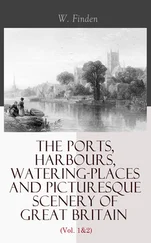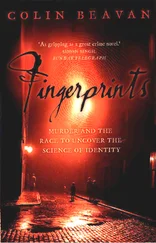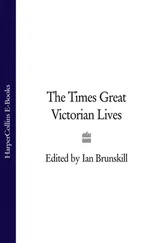Until now the police had kept quiet the fact that they had let themselves be locked in Samuel Kent's kitchen on the night after the murder. This 'extraordinary occurrence', in the words of the Somerset and Wilts Journal , had left anyone in the building free to destroy evidence. Samuel's actions smacked of contempt for the police, and a determination that his house escape their scrutiny. Or his behaviour could be seen as exemplary: the first duty of a father was to protect his family.
When asked by the police for floor plans of Road Hill House in the days and weeks after his son's murder, Samuel reacted as defensively as if someone were trying to take the roof off the place. He refused to supply a plan or to let anyone measure up the rooms. 'It is a sufficient explanation to say that Mr Kent simply resented an uncourteous intrusion,' said Rowland Rodway.
English family life had changed since the beginning of the century. The house, once a workplace as well as a home, had become a self-contained, private, exclusively domestic space. In the eighteenth century 'family' had meant 'kin', those related by blood; now its primary meaning was the inhabitants of a house-hold, barring the servants - that is, the nuclear family. Though the 1850s had been christened with a great glasshouse - the Crystal Palace of the Great Exhibition of 1851 - the English home closed up and darkened over the decade, the cult of domesticity matched by a cult of privacy. 'Every Englishman . . . imagines a "home", with the woman of his choice, the pair of them alone with their children,' wrote the French scholar Hippolyte Taine after a visit to England in 1858. 'That is his own little universe, closed to the world.' Privacy had become the essential attribute of the middle-class Victorian family, and the bourgeoisie acquired an expertise in secrecy (the word 'secretive' was first recorded in 1853). They walled themselves in against strangers, the interiors of their homes almost invisible, except when opened by invitation to selected visitors for a staged show of family life - a dinner party, for instance, or a tea.
Yet this age of domesticity was also an age of information, of a prolific and ravenous press. On 7 July a reporter from the Bath Chronicle had sneaked into Road Hill House in the guise of a detective, and made notes on the layout. An inaccurate floor plan was published in the paper five days later. Whether Samuel Kent liked it or not, the house was dissected for all to see, carved up clumsily to expose each floor to scrutiny. The public seized on the information the diagrams provided. The landscape of the house took on emotional inflections: the locked cellar, the dusty attic, the lumber rooms furnished with unused beds and closets, the twisting back stairs. 'The whole moral interior of the house ought to be laid bare to the public gaze,' argued the Bath Express .
A murder like this could reveal what had been unfolding within the shuttered middle-class house. It seemed that the cloistered family, so honoured by Victorian society, might harbour a suppression of emotion that was noxious, toxic, a sexual and emotional miasma. Perhaps privacy was a source of sin, the condition that enabled the sweet domestic scene to rot from its core. The closer the house was kept, the more polluted its inner world might become.
Something had festered in Road Hill House, the emotional counterpart to the airborne infections that terrified the Victorians. A month before the murder, the Devizes and Wiltshire Gazette reported on a new edition of Florence Nightingale's Notes on Nursing , first published in 1859, quoting a passage about how disease and degeneration could be bred in sealed, respectable homes. Nightingale had known severe cases of 'pyaemia', or blood poisoning, in 'handsome private houses', she wrote, and the cause was 'foul air . . . it was that the uninhabited rooms were never sunned, or cleaned, or aired; - it was that the cupboards were always reservoirs of foul air; - it was that the windows were always tight shut up at night . . . you may often find a race thus degenerating and, still oftener, a family'.
On Thursday, 19 July, the Bath Chronicle published an editorial on the Road Hill murder:
No assassination within our recollection has caused so singular, and so painful a sensation in the homes of the country. It is not the mere mystery which at present enshrouds the deed that gives it this terrible interest. It is the strange character of the deed, and the helpless innocence of the victim that touch respectively the imagination and the heart . . . The mothers of England, thinking of their own little ones sleeping in peace and purity, shudder at the tale of a child, as gentle and innocent as their own, being dragged in the still morning from its slumbers, and cruelly sacrificed, and it is the mothers of England who write most earnestly, most indignantly, to the conductors of the journals, and almost clamour for the most unsparing search and the most untiring test . . . in many a home where intense affection is combined with much nervousness on the part of the most valuable member of the family, her peace will for many a day be broken, her dreams disturbed, by the recollection of the dreadful story from Road. Strange doubts, vague distrusts will arise in her mind . . . A deed that sends a shudder through every English home, acquires a social importance which justifies any amount of attention to the subject.
Usually in an unsolved murder case the public feared that the killer might strike again. Here, though, the fear was that he or she could be duplicated in any home. The case undermined the very idea that a locked house-hold was safe. Until it was solved, an English mother would sleep uneasily, haunted with the idea that her house harboured a child-killer - it could be her husband, her nanny, her daughter.
Though it would be an assault on the middle-class ideal if the master of the house, the protector, had destroyed his own son in order to disguise his depravity, the press and the public were surprisingly quick to believe in Samuel's guilt. Almost as horrible - and apparently equally believable - was the idea that the nursemaid had helped him to kill the boy she was hired to tend. The alternative was that this crime harked back to the original biblical murder, Cain's killing of Abel. On 19 July the Devizes Gazette implied that one of Saville's siblings was responsible for his death: 'The voice of the blood of one as innocent as Abel will be made to cry from the very ground in testimony against the murderer.'*
On the same day the Bristol Daily Post (founded that year) printed a letter from a man who believed that an examination of Saville's eyes might reveal the image of the killer. The correspondent based his suggestion on some inconclusive experiments conducted in the United States in 1857. 'The image of the last object seen in life remains printed, as it were, on the retina of the eye,' he explained, 'and can be traced after death.' According to this hypothesis, the eye was a kind of daguerreotype plate, registering impressions that could be exposed like a photograph in a darkroom - even the secrets locked up in a dead eye might be within the reach of the new technologies. This took to an extreme the way the eye had been turned into the symbol of detection: it was not only the 'great detector' but also the great giveaway, the telltale organ. The letter was reprinted in newspapers all over England. Few treated it with scepticism. The Bath Chronicle , though, dismissed its usefulness to the case on the grounds that Saville was asleep when the killer struck, so there could be no image of the murderer on his retina.
In the evening of 19 July a tremendous downpour over Somersetshire and Wiltshire brought the brief summer of 1860 to an end. The haystacks had not yet dried, and most were spoiled. The fields of corn and wheat, not having had time to ripen in the sun, were still green.
Читать дальше












